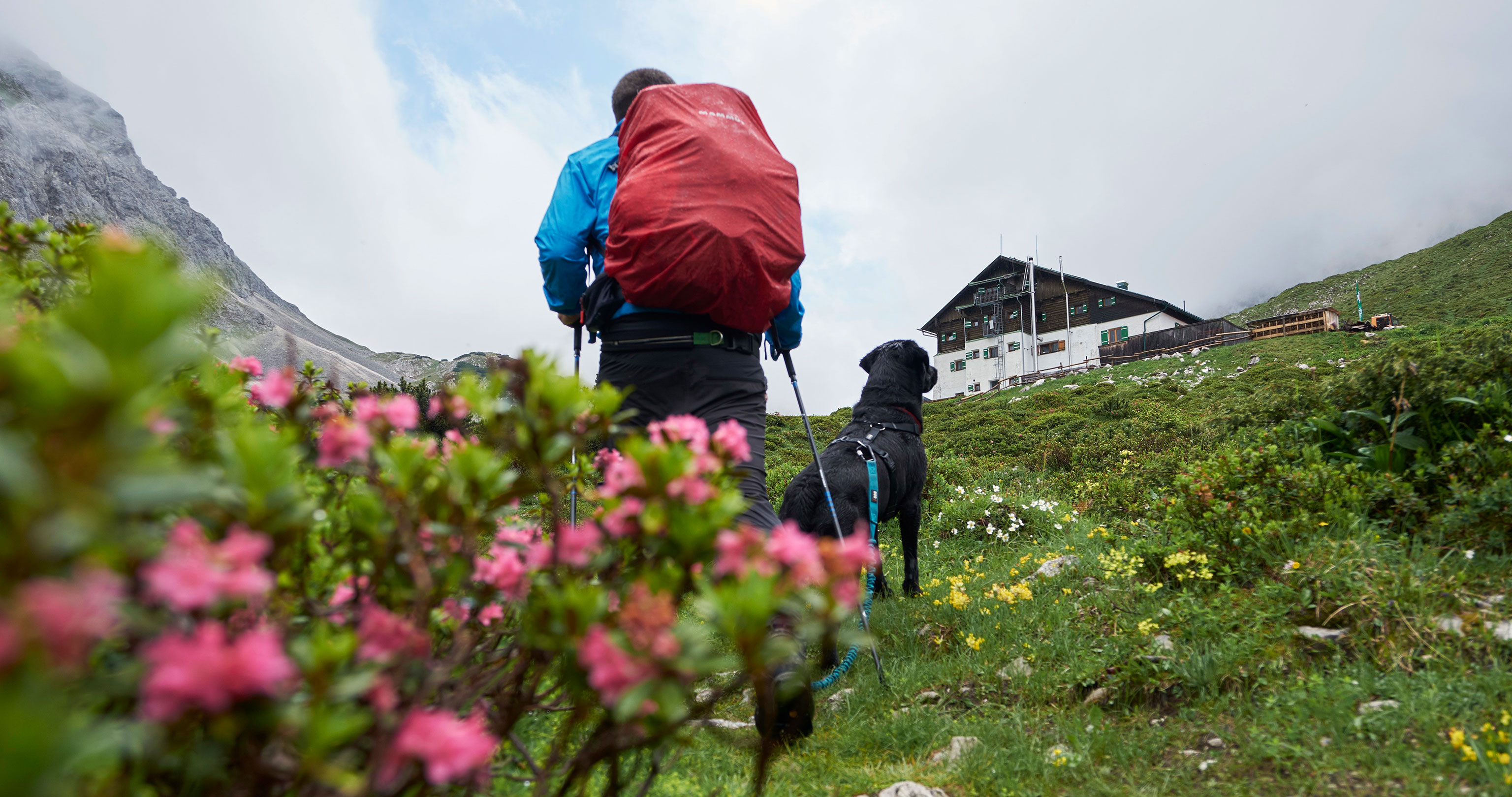Updated on
-
SNEAK PEAK – THE 5 KEY TIPS
● Consider what type of work would suit you best on a mountain farm, e.g. dairy farming and/or catering
● Apply early because positions at mountain huts/ farms are usually assigned in winter.
● There are specific job websites for ‘Alm’ work.
● Pay is usually minimal – sometimes it’s just food and accommodation.
● Keep your expectations realistic. The work is mostly tiring, but also hugely rewarding.
For more in-depth information, read the full article.
- What type of ‘Alm’ jobs are there?
- What is the season for alpine farm/ hut jobs?
- How long does an alpine farm/ hut job last?
- What are the requirements?
- Where to find jobs?
- How is the work remunerated?
- What is the most common mistake people make?
- Conclusion: There is something romantic about working on an alpine pasture, as long as...
Katharina Krepold wanders through alpine meadows in the Swiss Alps with a herding stick in her hand. She is looking for the 100 or so cows she tends, so she can herd them back for milking time in the barn of the alpine hut. “Up here, I feel so close to the heavens, yet more rooted than ever,” says the 33-year-old alpine herder, or ‘Älplerin’ as they’re called in Swiss German (ref. also glossary at the bottom). In this job, I’m totally at the mercy of nature. Whether it’s stormy, raining or snowing, you have to get out there. But equally, those are the times I most keenly feel how wonderful it is to be alive.”
Katharina has spent the past 14 years tending to various high alpine farms throughout the eastern Canton of Graubünden. She’s long since become adept at milking cows and making cheese, and now takes her two children with her (2 and 3 years old) up to the ‘Alp’ for the summer. For the qualified mechanical engineer and business economist, it all started with a dream, one which more and more people share: of spending summers in the mountains, working in the alpine pastures, and of finding a meaningful job that’s in harmony with nature.
In this article, Katharina explains how to make this dream come true – and what to bear in mind if you want to work in alpine pastures or at a mountain hut.
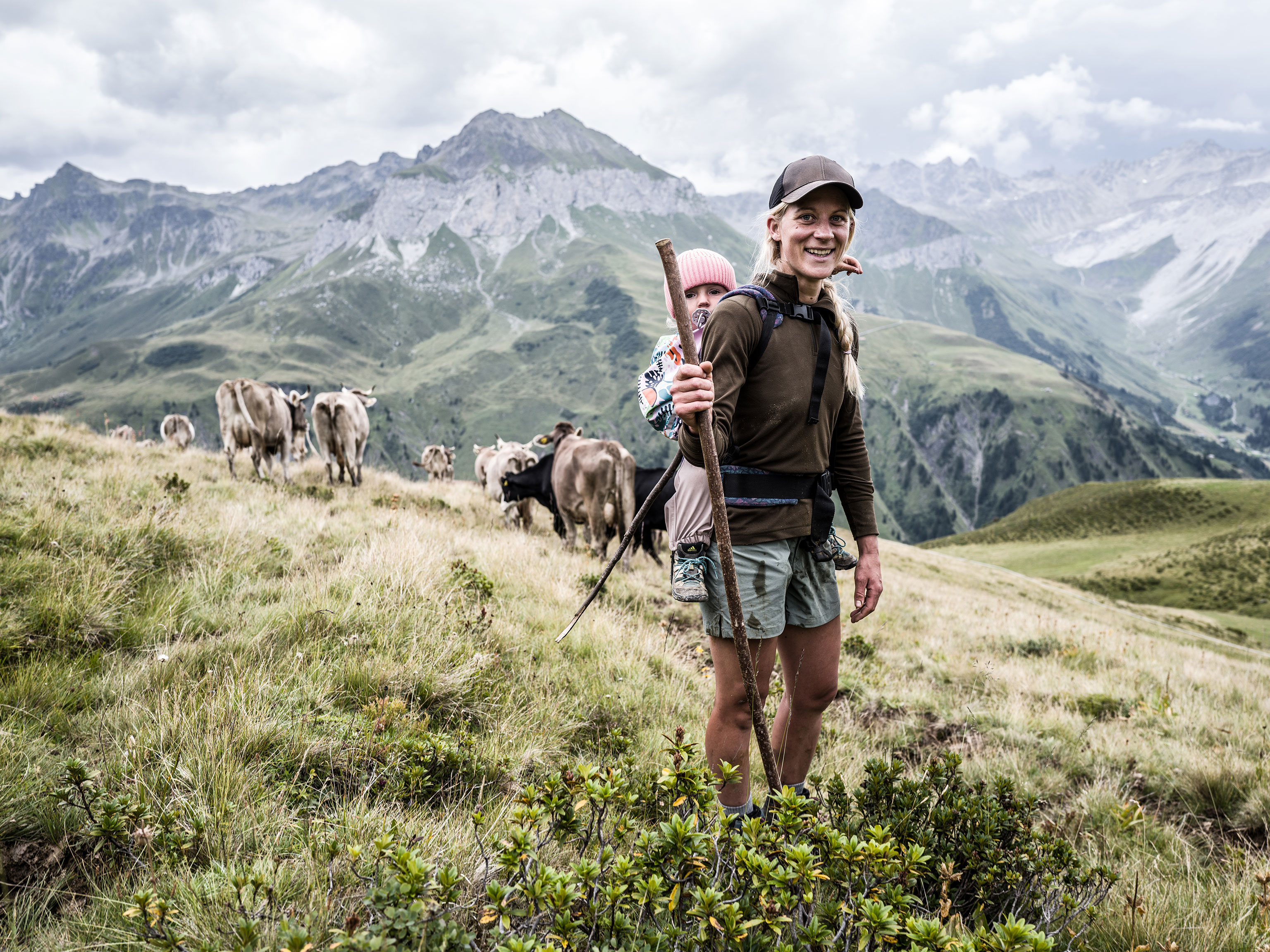
Katharina Krepold is not just an Älplerin (alpine herder), but also part of the team at HANWAG Sole People. You can find out more about her life in the mountains and her choice of footwear on Katharina’s topic page.
1 What type of ‘Alm’ jobs are there?
Whether it’s Switzerland, Austria, South Tyrol or the German Alps, workers are always needed. Generally, the work is divided up into three categories:
- Alpine farms without dairy: Here, you’ll be looking after animals – usually heifers (young cows) or steers, but sometimes it’s goats, sheep, or ponies. On farms like these, which are for young animals, there is no milking. The work is more of a shepherding nature. Animals need to be kept together, and pastures and fences regularly checked and maintained.
- Alpine farms with dairy: These are where dairy cows spend the summer. And so, duties here include milking, and in many cases also turning the milk into cheese or butter.
- Alpine farms with catering: Some herding or dairy farms also offer catering for hikers and sometimes sell their own products. Tasks therefore range from milking to cooking/baking and serving guests.
“Alpine farms tend to be on the lookout for staff every year,” says Katharina. “The range of duties that need to be covered is vast. There are ‘Alm’ jobs for novices as well as ones for very specific tasks which might require some previous experience in farming or hospitality, say. You can get a better idea by checking out dedicated job portals.” (see below)
-
Specialist mountain hut and alpine farm jobs
- Alpine huts with hospitality: Serviced mountain huts like these are often run by alpine clubs. They offer accommodation or catering for hikers and climbers. There are usually no farm animals here. And so jobs on offer are more on the catering side: cooking, service, and cleaning. Plus some maintenance of the rooms, dorms and toilet facilities. These jobs are usually referred to as ‘hut’ jobs rather than ‘Alm’ jobs. You’ll find jobs advertised on the job platforms of the German Alpine Club or the Austrian Alpine Club.
- Mountain farms: Many mountain farms are delighted to welcome volunteers in summer to help with things like labour-intensive haymaking, for example. In return, there is usually no pay, but you get room and board and therefore also an intimate experience of family life, plus memorable experiences in nature and with the animals. You can find jobs on sites like the Österreichische Maschinenring (Austrian farm machinery cooperative) or Bergbauernhilfe Südtirol (mountain farm volunteering South Tyrol).
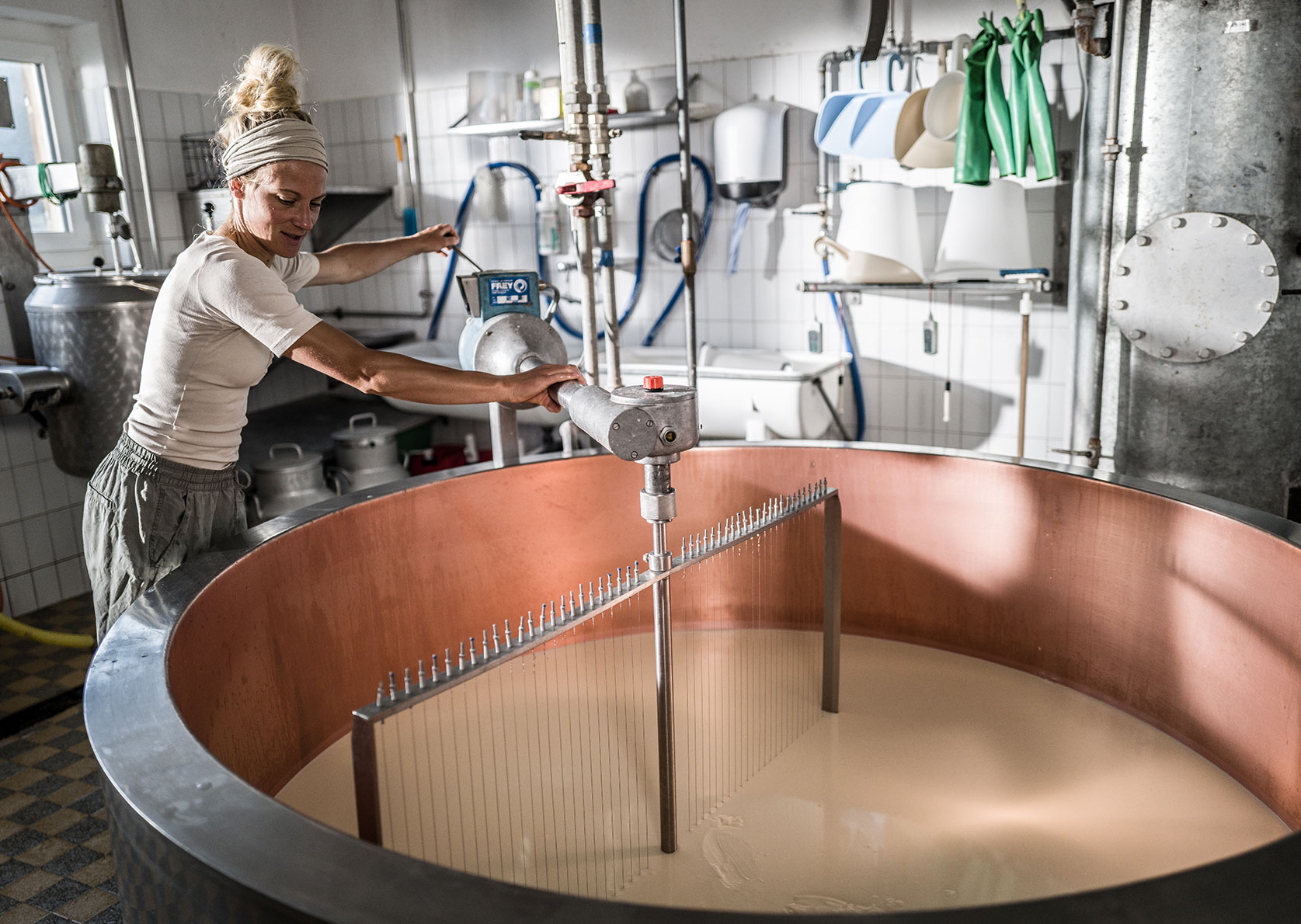
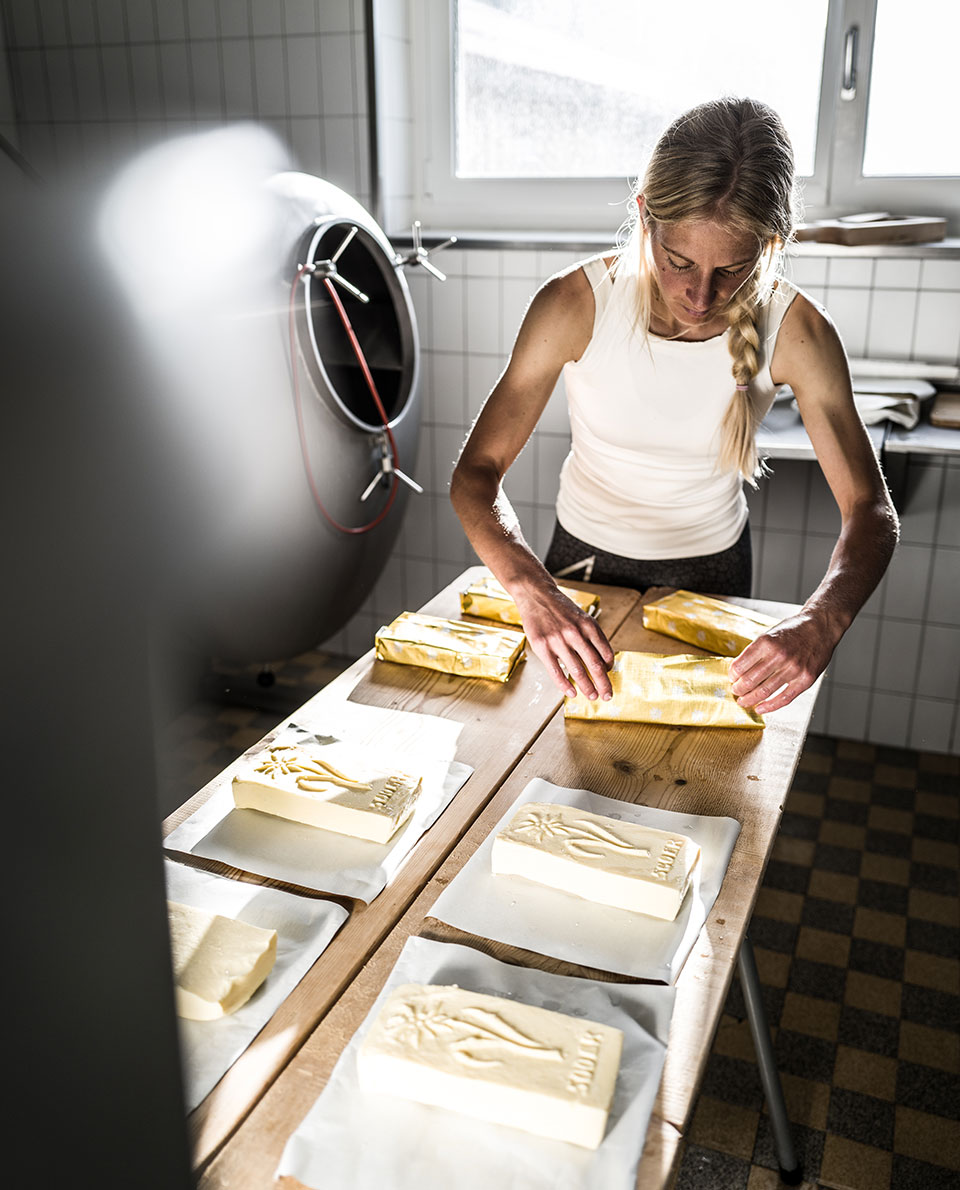
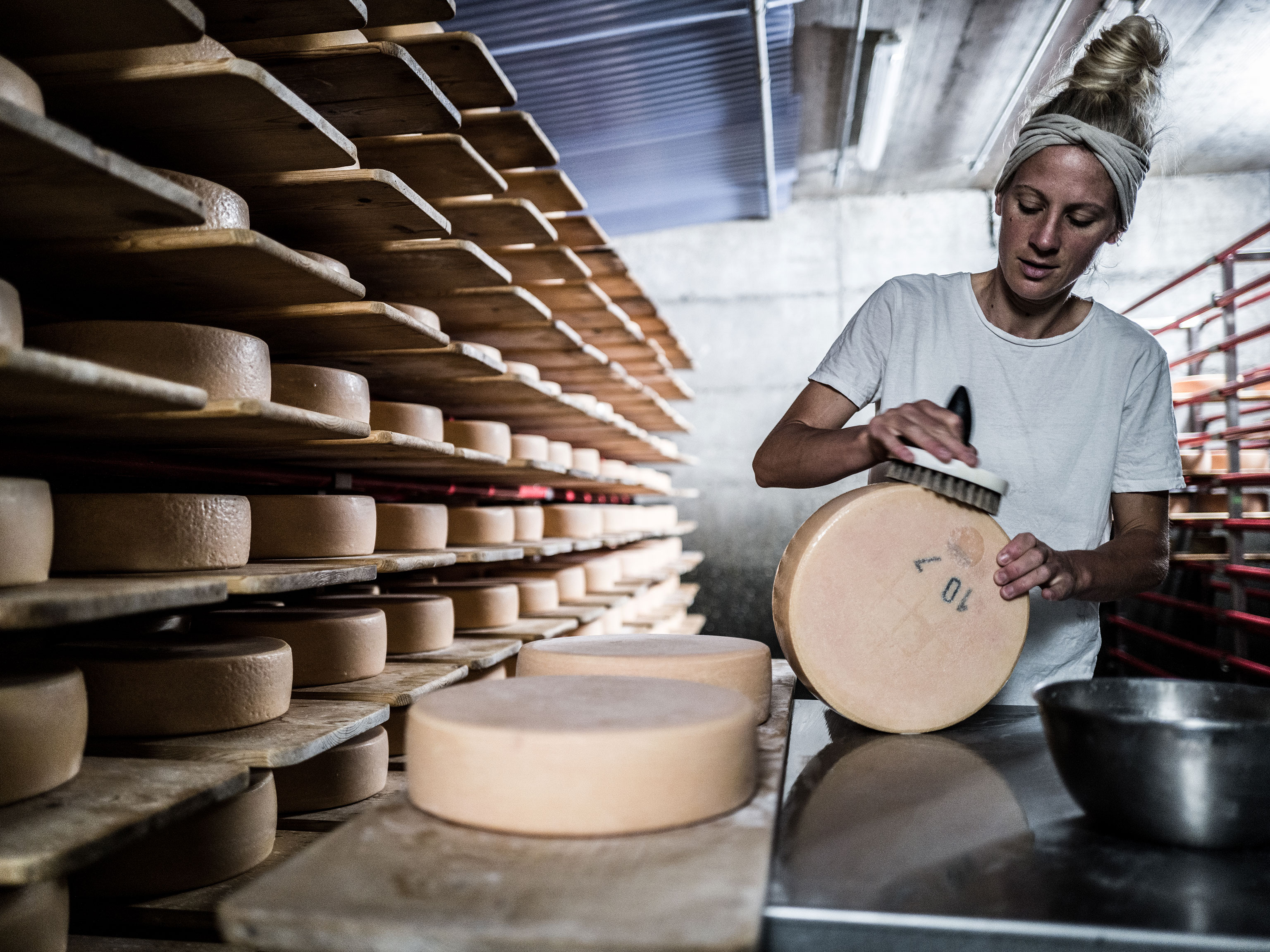
2 What is the season for alpine farm/ hut jobs?
The season for ‘Alm’ jobs runs from May/ June through to September/ October. In early summer, the animals are driven from the valley up to the mountain pastures. The cattle drive (Almabtrieb) back down in early autumn is an event that is celebrated by the whole valley community. “I just think about the Almabtrieb and I well up,” extols Katharina. This period of time also roughly coincides with the hiking season in the mountains. That’s why most mountain farms/ huts look for workers from early summer to autumn.
Important: Jobs in alpine farms/ huts are very popular, which is why they are often all assigned in winter already. So if you only start looking in May, you’re likely to have to wait until next year.
-
Glossary: key terminology for alpine pastures/ farming
- Alm/ Alp/ Alpe: This is the German term for a mountain pasture where livestock is kept during the summer months. The term varies from region to region: ‘Alm’ is mainly used in Austria and southern Germany, ‘Alp’ in Switzerland and ‘Alpe’ in parts of Bavaria and the Allgäu. These pastures are not only used for livestock farming but are often an important part of the local ecosystem and cultural landscape.
- Sennerin/Älplerin: The German term for the herder or person working in the alpine pastures. The ‘Sennerin’ (in Austria or southern Germany) or Älplerin (Switzerland) takes care of the animals, milking, and dairy production, and maintaining the alpine pastures. The work requires a wide range of skills, from animal husbandry to dairy production.
- Sennerei/ Alpkäserei: German terms for an alpine dairy or facility on a mountain pasture or Alp where the milk from grazing animals is processed into various dairy products. Produce can include butter, cheese, yoghurt and other dairy products. Traditional cheesemaking is an important part of the culture and economy of many alpine regions.
- Almhütte/Alphütte: The German terms for a simple, often rustic form of accommodation or shelter in an alpine pasture setting, which serves as living space for the herders or Sennerin and as storage for tools and supplies. Alpine huts can also serve as shelters for hikers and tourists.
- Almvieh: The German general term for livestock species that are tended in alpine pastures during the summer season. These are usually cows, but can also be sheep, goats and sometimes ponies. Traditional alpine farming is closely linked to livestock farming, as the animals benefit from the lush alpine grasses and at the same time help to maintain the landscape.
- Almabtrieb/Alpabzug: The traditional droving of the cattle/ livestock from alpine pastures down to the valley at the end of the summer grazing season. This is often accompanied with festive activities and marks the end of the season. In many regions, the cattle drive is an important cultural event that also attracts tourists.
- Dirndl: Traditional dress worn by women throughout the Alps, with a wide skirt and tightly gathered waist.
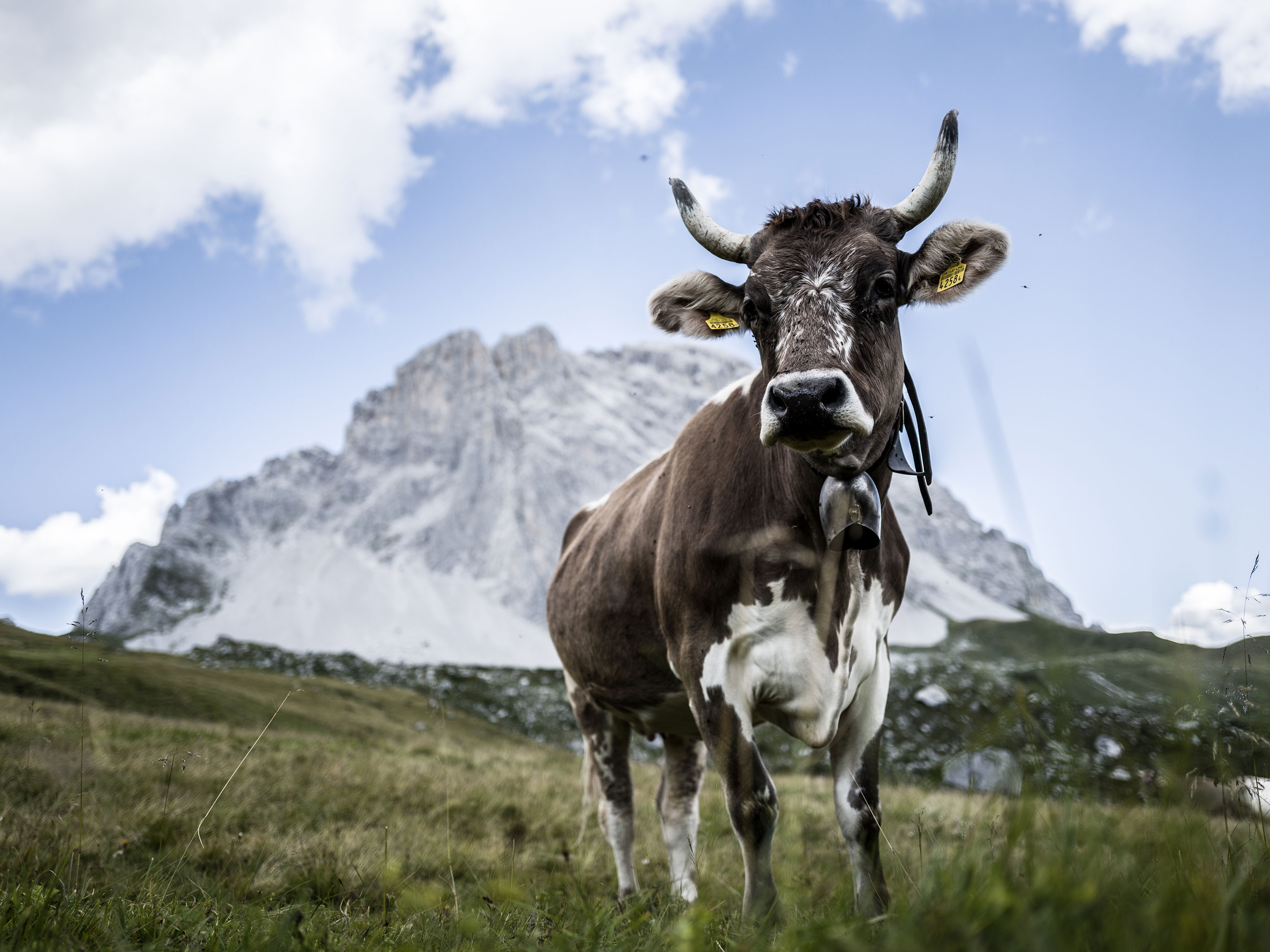
Hygiene matters: “In the alpine farms I looked after there was always a shower with hot water and a decent toilet,” explains Katharina. “I’ve even seen dishwashers and tumble dryers. But if you prefer, you can also find basic mountain huts with an outhouse and cold water only.”
3 How long does an alpine farm/ hut job last?
The working hours and duration of the job can vary considerably, depending on the particular farm/ hut, the type of work and any specific requirements they have.
- Seasonal work: Traditionally, alpine farm/ hut jobs cover a whole season. This time period is essential for alpine farming, as it spans the bulk of farming activities such as animal husbandry, cheese production and maintenance work. If you are interested in a full-time job, you should be prepared to commit to the whole season. This will give you the chance to immerse yourself in the culture and daily routines of mountain farming.
- Short-term work opportunities: While traditional alpine farm work is seasonal, there are also opportunities for short-term employment, such as a holiday job on the ‘Alm’. Some alpine farms offer jobs for a few weeks, especially during peak periods or during particularly labour-intensive periods, such as the cattle drive at the end of the season, or during large farming events on the alpine pasture.
“The length of time you want to work on a mountain pasture also depends on how well you can fit it into your normal life,” Katharina points out. “Can I get time off from my regular job to work up on the mountain pasture? What will I do with my children or pets during this time? Can I reduce my fixed expenses at home for the time I’ll be working on the mountain pasture? You need to consider questions like these before taking a job on the ‘Alm’.”
“It’s always best to go and introduce yourself and have a chat. Then you can also see what work is involved.”
Mountain dairy farmer/ Älplerin Katharina Krepold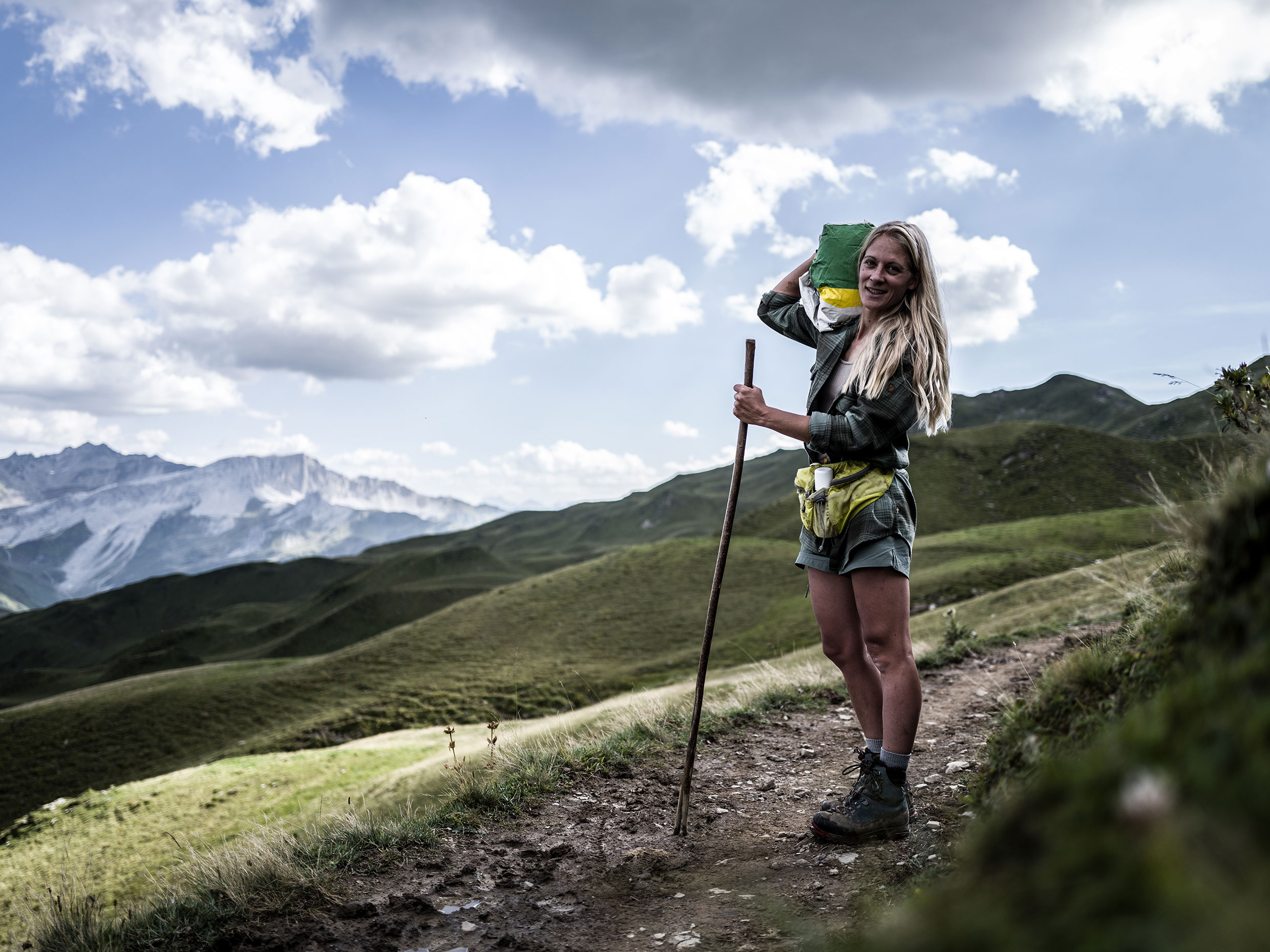
4 What are the requirements?
“No matter what type of work you find, or any previous experience you might have, working on the mountain pasture is no walk in the park,” says Katharina. “Getting up at 4 am, tough physical labour, and up to 2,000 metres of ascent each day – that’s not just part of my job here, but of most of them.” At her alpine farm, Katharina processes approx. 1,200 litres of milk a day, and makes up to 3,600 kg of cheese each day. “All I can say is, don’t have any illusions about the work in alpine pastures,” says Katharina. “Because nothing is more frustrating for the helpers, hut wardens or mountain farming families, than when a seasonal worker quits early.”
That’s why Katharina advises going to meet them in person before taking on the job. “You’ll get a realistic impression of the work involved and can also see if you’ll get along as people, should you be looking to spend the summer together.”
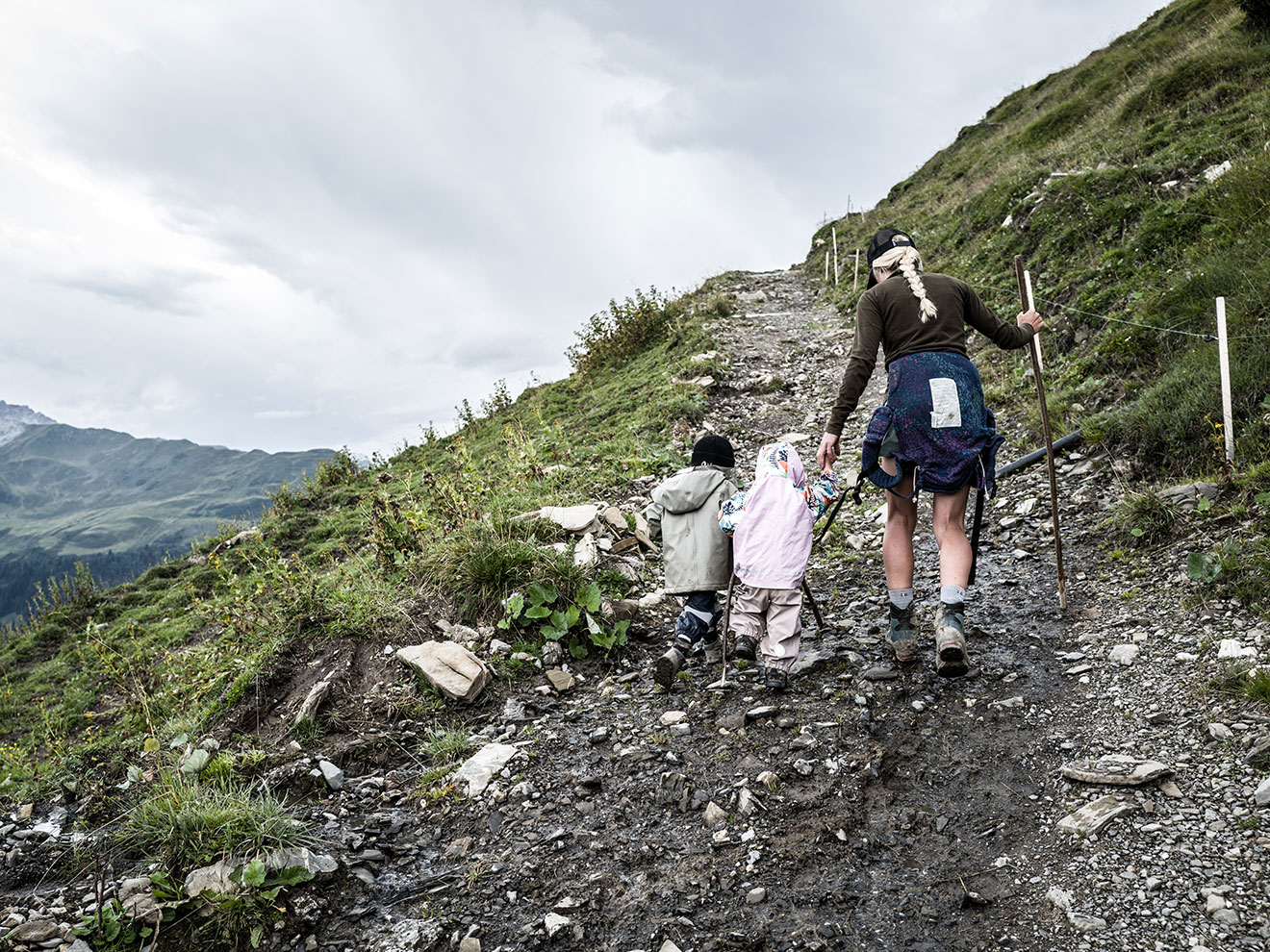
The mental or emotional requirements should not be underestimated either. “There are moments of sheer joy, like watching a dreamy mountain sunset or rewarding times with the animals or other people,” Katharina enthuses. “But working on the Alm is also mentally exhausting. Things invariably go wrong. And it’s definitely not for everyone – not seeing a soul for days at a time or living in close quarters with others in a hut.”
But for Katharina, the good aspects outweigh the bad: “Nowhere do I feel more connected with myself than up here.”
5 Where to find jobs?
- The almwirtschaft.at website has a wide range of jobs in Austria, as well as in bordering mountain areas in Italy/ South Tyrol. You’ll find jobs for more experienced workers as well as novices here.
- For mountain jobs in Switzerland, check out zalp’s forum.
- And for a summer working in the Bavarian Alps, contact the recruitment agency for the Almwirtschaftlichen Vereins Oberbayern (Alpine farming association of Upper Bavaria).
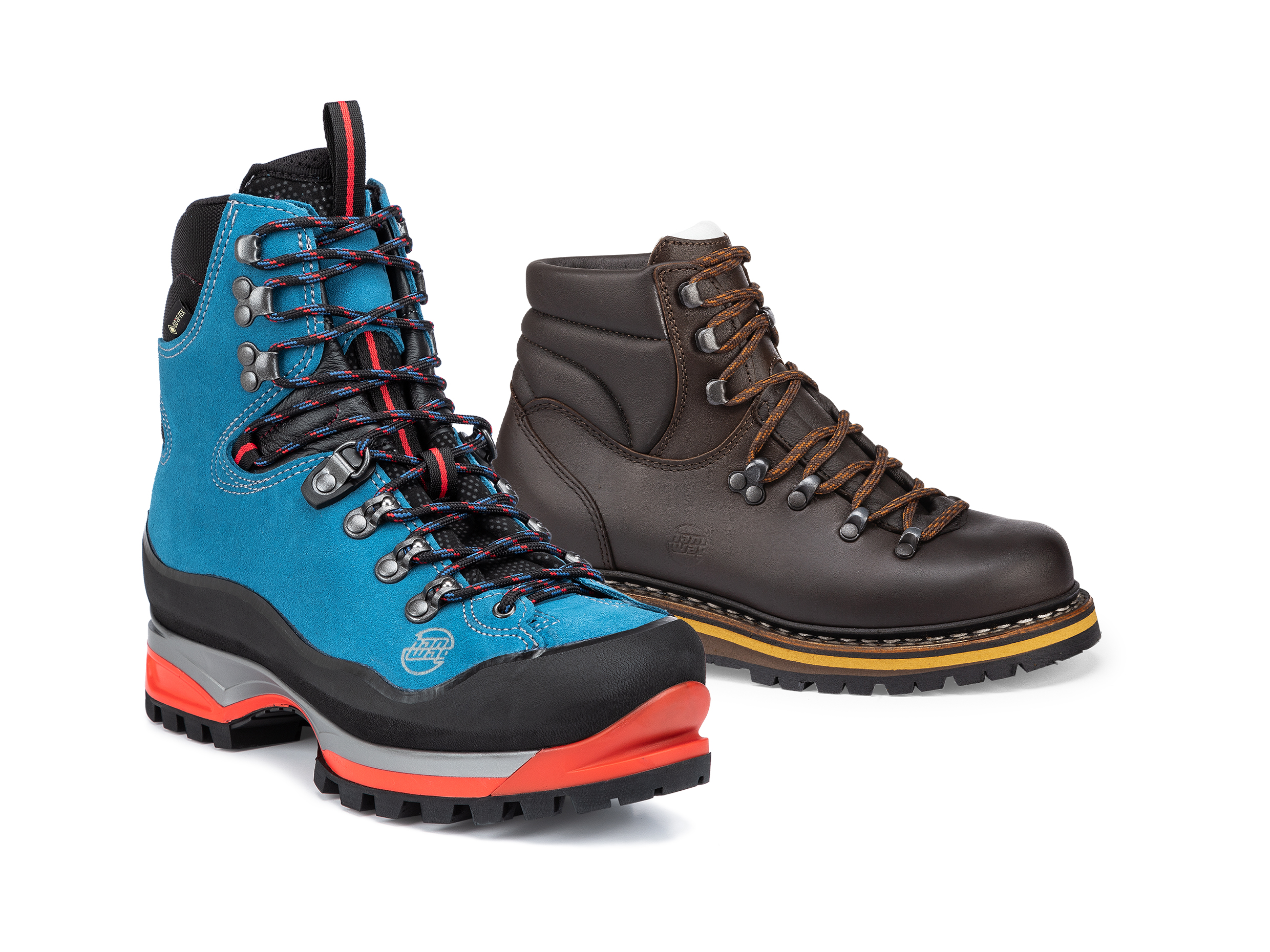
Check out Katharina’s footwear for the alpine pasture
“The sturdy HANWAG Sirius II Lady GTX gives me surefootedness, and it offers full support and protection for my feet on the steep, rough mountain terrain I have to negotiate. Stability is key when I’m chasing after a cow that has escaped. But my footwear has to be comfortable too, if I’m wearing them all day long. The HANWAG Grünten Lady is also my favourite as an all-rounder – and it goes really well with a ‘dirndl’. It’s a great example of ‘style meets tradition’.”
-
Further gear tips from Katharina
- “Up in the alpine pastures I need trousers that are hard wearing like the Fjällräven Keb Trousers. They’re stretchy around the hips which makes them comfortable when I’m negotiating steep terrain.”
- “I like wearing a vest over my T-shirt, like the Expedition X-Lätt Vest from Fjällräven. It’s great at blocking out the wind, which always seems to be blowing in the mountains.”
- “The most important piece of kit I have is my waist bag. I keep my pliers in it, a penknife, electric insulators and spare wire for the fencing. A small drinking bottle also fits in there.”
Labour laws matters: EU citizens can work in other EU countries without a work permit. The situation is similarly straightforward for short-term (up to 3 months) employment in Switzerland. However, interested parties should obtain information in advance, for example from the Swiss Confederation.
6 How is the work remunerated?
Pay for alpine farm jobs is generally very low. However, professionally operated alpine huts often pay catering wages – in exchange for suitably professional work as service staff or in the kitchen.
Some ‘Alm’ jobs are unpaid. In return for your voluntary work you will receive board and lodgings. And if, like Katharina, you run a mountain dairy single-handedly, then you usually have to take care of your own supplies, which means buying food in the valley and bringing it up.
Katharina sums it up like this: “No matter what the individual pay rate is, you won’t get rich working an alpine farm. You work on the ‘Alm’ for the experience and for your personal development, but definitely not primarily for the money.”
Watch the video: A day on the ‘Alm’ with Katharina (English subtitles available)
-
4 am to 10 pm: Katharina’s daily routine on the ‘Alm’
- 4 am: get up, gather cows into the barn, milk them, clean down the barn and drive cows back outside again.
- 6 am: to the cheese dairy to brush the cheese rinds, churn butter and prepare milk for cheesemaking.
- 9 am: breakfast
- 10 am: extract cheese, i.e. take the curds out of the kettle and press into shapes.
- 11 am: brush rinds again, churn butter, turn the cheese in its moulds several times a day.
- 1 pm: lunch with the children and breaktime.
- 2:30 pm: drive the cows back from their daytime meadow into the barn and milk them again.
- 6:30 pm: clean down the barn, drive cows back out, chill the milk in the dairy. And don’t forget to feed the pigs.
- 8 pm: dinner and put kids to bed.
- 9 pm: finish up in the dairy
- 10 pm: bedtime
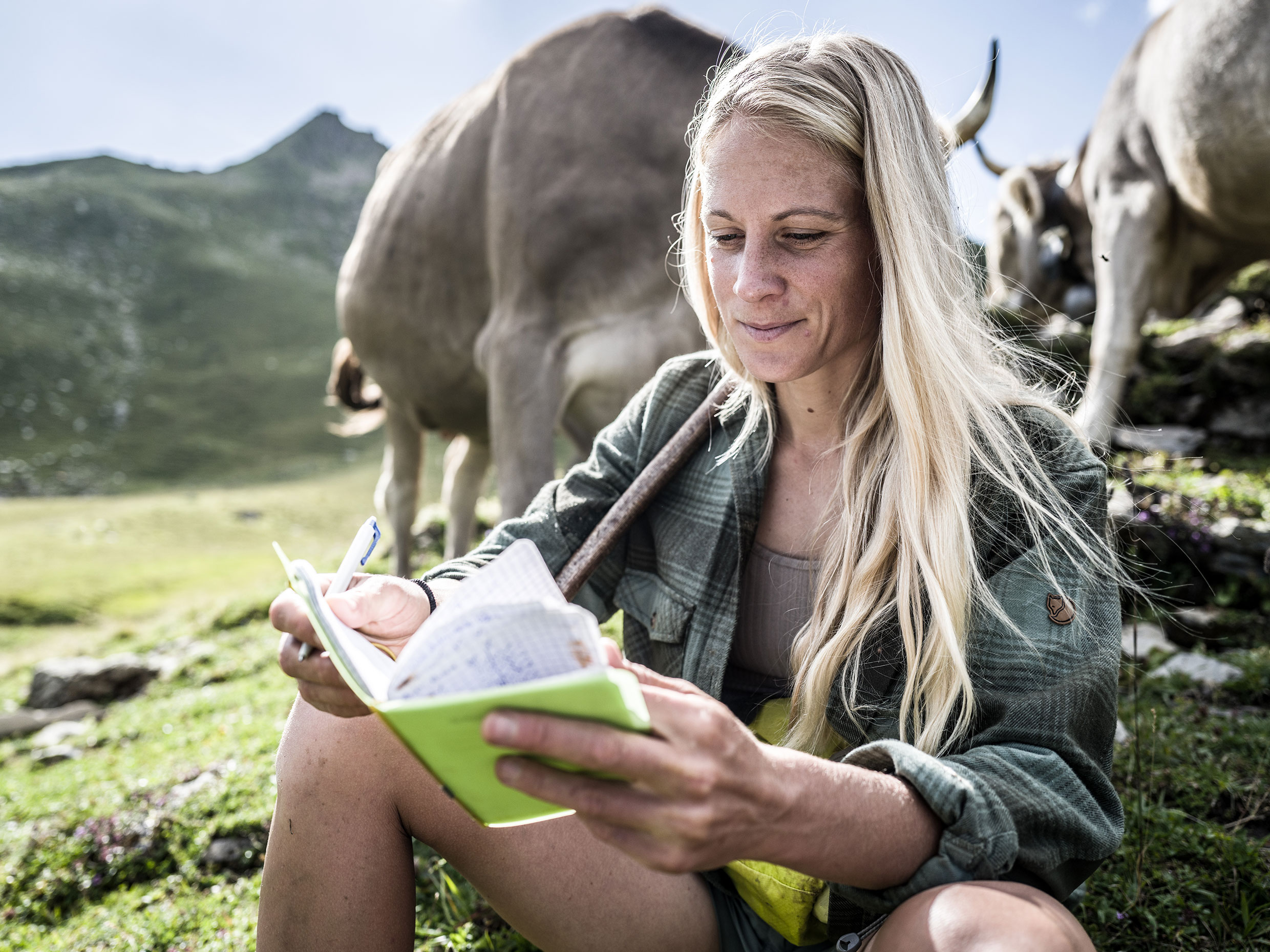
7 What is the most common mistake people make?
“The biggest joy killer is having unrealistic expectations,” says Katharina. “It’s true, the work is fulfilling and there are wonderful moments. But you also have to put in a lot of effort and make some sacrifices too. In some alpine dairies there’s no running water, and the little bit of electricity that’s generated from solar panels is just enough to power a few lights. And, of course, there’s no ‘popping’ to the cinema with friends either, when you’re up here. But instead, I have the best cinematic views ever!”
8 Conclusion: There is something romantic about working on an alpine pasture, as long as...
… you are under no illusions. Or else reality can soon shatter the dream.
“Working on an alpine farm definitely pushes you to your limits,” says Katharina, summarising her experience. “But that’s what makes it so interesting, because the work and the life up here helps you to grow as a person. The daily routine makes you realise just how little you can actually get by with. I find it really rewarding having that kind of minimalism. But you have to really want to be at it 24/7 and prepared to work a lot.”





